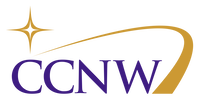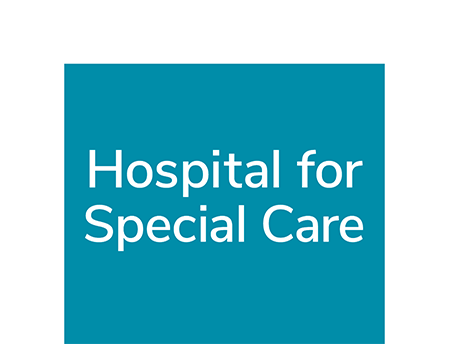|
Your State’s Governing Bodies- in Connecticut, we have our Governor’s Office and Governors Workforce Council, the Office of Workforce Strategy, the Department of Labor and Apprenticeship Division, the Connecticut Department of Public Health
In March of 2020, COVID was on our doorstep which accelerated dollars that would become available from the Federal government to the State of Connecticut. The Federal government under the CARES Act were provided to not only support the provision of health care and education but support all those businesses and individuals impacted by COVID. Connecticut was in receipt of $1.1 billion. In addition to these relief funds through the CARES Act, new dollars are being earmarked for Connecticut through the American Rescue Plan Act- called ARPA. Of the ARPA monies received, $70 million is earmarked for workforce development across all sectors. Summary & CLOSING:
0 Comments
The role of the boards is to support workforce development in their specific region by attracting federal and state funding to meet employer needs.
Very important to get your name out to these entities. Boards can be the fiduciary to large grants you wish to secure via HRSA, HHS, etc. and take care of all the reporting… This is what they are good at. Visit www.GRANTS.gov to see the hundreds of federal grants available for healthcare & nursing each year! The National FORUM of State Nursing Workforce Centers, Inc. (The FORUM) is to collect accurate state-specific data pertaining to: Determining the capacity of Nursing Education Programs at the RN and LPN levels via their MDS for Education; Understanding the Supply of Nurses via the MDS for Supply Survey; and Identifying the Workforce Demand identified of healthcare facilities and organizations that employ nurses via the MDS for Demand. Website: https://www.nursingworkforcecenters.org/
Only CT and Vermont have entities in their states that are members of the FORUM. CT would be happy to work with MA, NH, and RI to establish a connection with an existing organization within your states undertaking data work to become a member of the Forum. The WHO report cites critical research and references as to why and how Simulation as well as other Virtual learning technologies can transform learning and better prepare our students to meet national competencies and successfully transition to practice thereby limiting the human capital and financial resources that our healthcare settings spend to onboard the new nurse.
Access the WHO Report at: https://www.who.int/publications/i/item/dfigital-education-for-building-health-workforce-capacity-978-92-4-000047-6 Preparing Nurse Faculty and Addressing the Shortage of Nurse Faculty and Clinical Preceptors.10/6/2021 This Report was prepared by the National Advisory Council on Nursing Education and Practice.
In their 17th Report to the Secretary of Health and Human Services and the US Congress this past December, is meant to inform the Secretary and Congress on Policy matters arising in the administration of Title VIII Funding pertaining to nursing workforce, nursing education and nursing practice. Nursing Education is in crisis, and it will take ALL of us to stem the tide and expand our educational pipeline capacity! Report can be found at: https://oadn.org/news/nacnep-report-preparing-nurse-faculty-and-addressing-the-shortage-of-nurse-faculty-and-clinical-preceptors/ In early June of 2021, the Future of Nursing: Campaign for Action took a first step towards realizing the vision outlined in the National Academy of Medicine’s (NAM) new report, The Future of Nursing 2020 – 2030: Charting a Path to Achieve Health Equity. A virtual Summit with 200 key opinion leaders, experts, and change makers across the fields of health care, nursing, business, academia, and social justice participated in the 2-day hands on event. Twenty-eight (28) teams were created to address each of the report’s 54 sub-recommendations (under its nine major recommendations), answered questions including, What multi-sector partnerships are needed to implement this recommendation? and What milestones or benchmarks will tell us we’ve succeeded?
The result was 54 Draft Action Plans, each with specific tasks, timelines, and goals, that can guide how nursing will help transform health, health care and health equity for all. Access the action plans and next steps @ https://campaignforaction.org/resources/future-of-nursing-2030-action-hub/ Resources are available for your organizations to utilize via your State Action Coalitions that undertook many initiatives related to the 2020 Future of Nursing Report published by the National Academy of Medicine. Even if your Action Coalition is not active, the national website for the Campaign still has a treasure trove of materials and toolkits refenced for your use- All free of charge.
In Connecticut, as one of the statewide initiatives via our Coalition, a 4- module online self-paced Population Health Course was created and launched. Although the activities and monies to support the Coalition have waned, The Board of the CT League for Nursing made a commitment to keep the course up and running with a major content revision and update competed in this past July. This Course can be accessed at: www.CLNOnlineEducation.com National Campaign resources can be found at: https://campaignforaction.org/resources/#p=1 Accelerating Nursing, Transforming Healthcare authored by: AONL, Johnson and Johnson and ANA10/6/2021 In the executive summary of this report, six out of eight priorities for nurse-led transformation directly correlate to the issues that you've identified in your thinktank white paper. These include:
This report provides baseline workforce data and is created in collaboration between the National Council of State Boards of Nursing (NCSBN) and the National Forum of State Nursing Workforce Centers. The most recent April 2021 Survey Report can be found at WWW.journalofnursingregulation.com
The Report highlights the demographics of RNS an LPNs across the nation. As you know, data without context, benchmarking and discussion & debrief with “intimate” stakeholders may not paint an accurate picture. Although this report is a very robust reflection of employment of nurses across the country, the items included in the minimum data set for supply were created for the purposes of licensing and regulation and not truly designed to capture the nuances of an ever-changing nursing workforce. Many forecasting models used to project demand and future supply are based on employment patterns in the past. You know better than I… that this no longer holds true, Nurses do not get hired by one institution right out of school and spend their entire careers with that employer. They move constantly and cause what is now termed as “The Churn” . Researchers are still trying to get a hold of this phenomena and incorporate it into new forecasting models to better align our supply projections. |
Categories
All
Archives
June 2024
|
OUR MISSIONTo foster collaborations to ensure a highly educated, diverse, and sustainable nursing workforce to support the healthcare needs of Connecticut residents.
Terms of use Policy | Privacy Policy
Event Policy: No refunds will be given two (2) weeks prior to any event |
LoginContact UsFor more information or questions, please complete the online form to contact Marcia B Proto, M.Ed, CAS via email.
|

 RSS Feed
RSS Feed

















